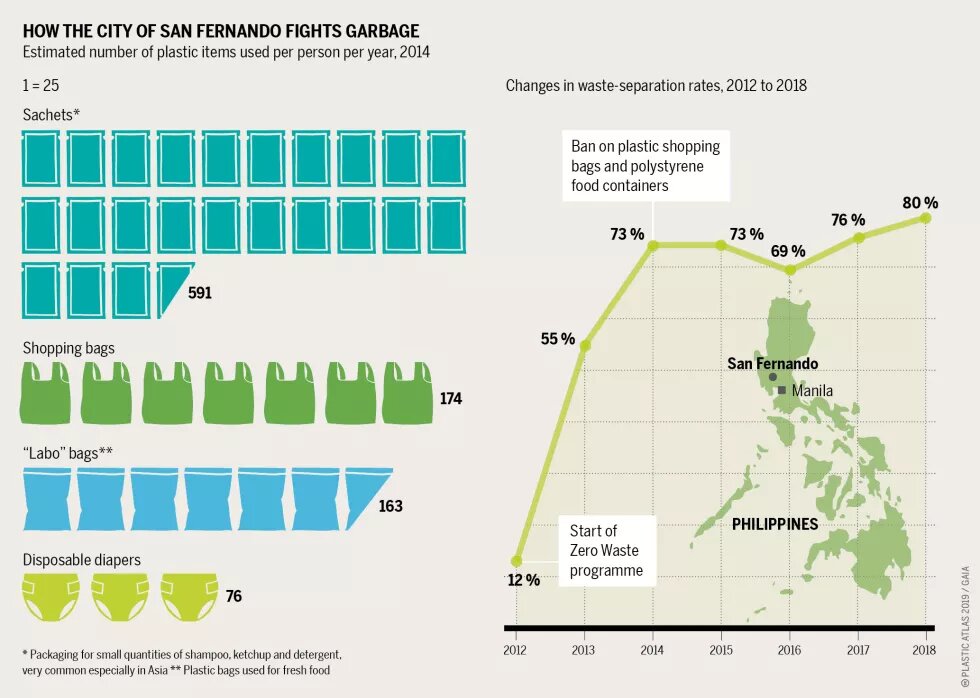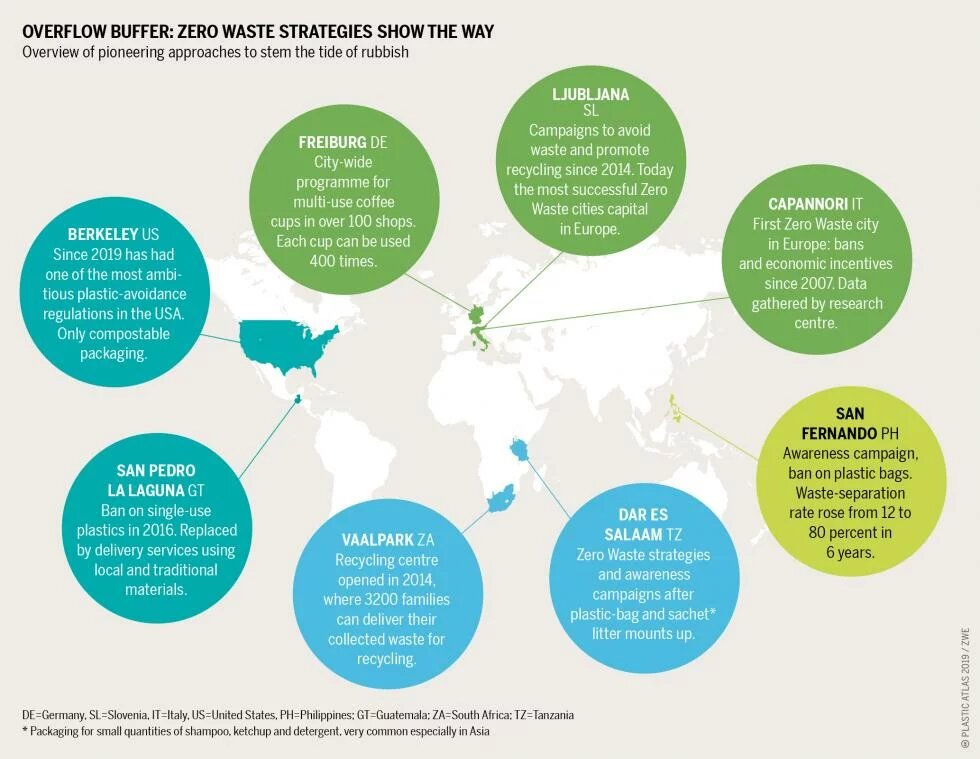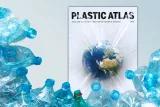
Recycling alone cannot solve the plastic crisis. New ideas are needed that tackle the roots of the problem. A growing movement is showing how that can work - and a few pioneering cities and towns are blazing the trail.

A movement called “Zero Waste” has emerged: its goal is to stop the tide of waste at its source. This means that products, packaging and materials are produced, consumed and recycled in a responsible manner. No waste is incinerated. Toxic materials do not end up in the ground, in the water or the air. Communities, visionary policymakers and innovative entrepreneurs are showing that it is possible to use resources efficiently, maintain a healthy environment, consume in a sustainable way, and at the same time create local jobs.
Nearly 400 municipalities in Europe, and an increasing number of local authorities worldwide, are adopting Zero Waste strategies. These are an effort to phase out waste — not by burning or landfilling it — but by creating systems that do not generate waste in the first place. The fight against plastic waste begins at the source: it means eliminating single-use plastics and promoting alternative distribution and delivery systems. It also means building on the growing interest in a Zero Waste lifestyle.
Capannori, in northern Tuscany, Italy, was the first town in Europe to set up a Zero Waste strategy in 2007, committing to sending zero waste for disposal by 2020. This municipality has developed a comprehensive approach: it aims to maximize material recovery by collecting different types of waste separately, and gives economic incentives to reduce waste at source. It strives to reduce residual waste in various ways. For example, it has opened packaging-free shops that sell locally produced items, and installed public drinking water fountains to eliminate the need for bottled water. It has set up a reuse centre where people can take clothes, shoes and toys that they no longer need. These items are then repaired and sold to people on low incomes. The town also subsidizes washable diapers. It organises Zero Waste challenges to help citizens accept these initiatives and adopt new habits.
The results have been impressive. In the 10 years from 2004 to 2013, the amount of waste generated in Capannori dropped by 39 percent, from 1.92 kilograms to 1.18 kilograms per person per day. Even more impressively, the rate of residual waste per person fell from 340 kilograms per year in 2006 to only 146 kilograms in 2011. That is a fall of 57 percent. In the same year, the average person in Denmark threw away 409 kilograms of waste.
In the developing world, the spread of similar approaches is key to ensuring a just transition to a plastic-free economy. An example: in 2018, the city of San Fernando in the Philippines diverted 80 percent of its waste away from landfills by having a cooperative recycle it.
The city has taken a series of steps to further reduce its plastic-waste footprint. It has banned plastic shopping bags, affecting 9,000 businesses. It has set a levy on single-use packaging, and has made sure alternative options are available. It has achieved an 85 percent compliance rate among residents through continuous efforts to explain the approach: through house-to-house information, a regular radio show, dialogue with business groups, and individual meetings, for example with shopping malls that generate a lot of waste.
This has also been good for the city’s finances. The annual cost of transporting solid waste to a landfill about 40 kilometers away has dropped by 82 percent. The savings have been used to hire more waste workers and improve waste-management facilities.
Capannori and San Fernando show that the path to Zero Waste must combine both “hard” and “soft” measures. “Hard” measures concern the waste-management system itself such as organic-waste management, the separate collection of different types of waste, decentralized and low-tech models, economic incentives, bans on certain materials, and waste minimization policies and practices. “Soft” measures include involving residents and businesses in all stages of policy development. This helps give rise to new business models, as well as generating savings that flow back to the community.
Plastics are so ubiquitous that it is unrealistic to expect to find a magic bullet; solving the plastic problem instead requires a holistic approach. Once this is identified, a self-reinforcing cycle is set in motion. When citizens post pictures of plastic-wrapped fruit and vegetables on social media and tag them with #DesnudaLaFruta (Spanish for “UndressTheFruit”), they promote a new plastic-free norm. Innovative business leaders help mainstream such Zero Waste forms of consumption. We only have to start questioning things that we have come to accept as normal.
This is a chapter from the Plastic Atlas 2019.
